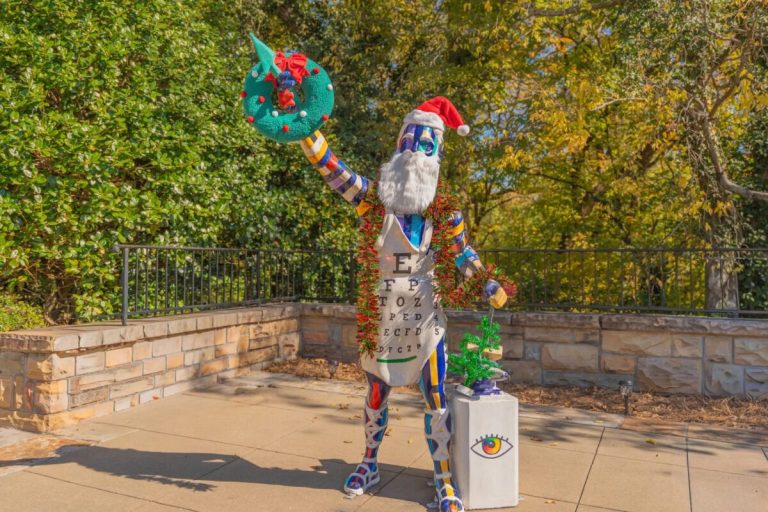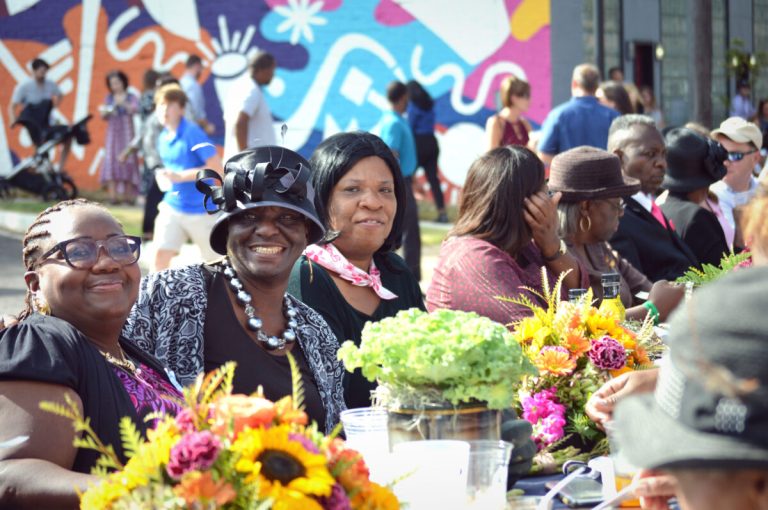Why is Birmingham so far behind in recycling?
Reading time: 9 minutes
Sponsored

The numbers have improved ever so slightly over the past decade. But, according to the latest Alabama Department of Environmental Management (ADEM) Solid Waste Biennial Report released in 2016, Alabama recycles less than 16% of its waste. The national recycling rate is 34.3%.
The result of our throwaway society?
On average, each Alabamian throws away 2000 pounds of paper, plastics, glass, aluminum and steel cans annually.
Let that sink in. We bury a ton of garbage per person a year. Statewide nearly 5 million tons.
It’s a missed opportunity. Alabama’s disinterest in recycling its solid waste has cost local governments and our communities money and jobs.
In the course of a three part series, Bham Now will examine the history of recycling and solid waste in Alabama, the economic costs and jobs lost by not recycling and a path forward including local and state initiatives that need to be implemented.

Recycling in Birmingham, the great Earth Day awakening
The first Earth Day in 1970 not only launched the national environmental movement to clean up our air and water, it helped jump-start local recycling programs throughout the nation.
Birmingham’s first citizen driven recycling effort was founded by Lee Ola Dewberry, whose family owned Dewberry Drugs in downtown Birmingham. Working through the Alabama Conservancy, which is now the Alabama Environmental Council, Dewberry set up recycling booths in a Vestavia shopping center and various sites around town. The project eventually failed because local residents kept throwing trash into the recycling bins, but that first initial effort got the Alabama Conservancy “hooked” on recycling.

After a couple years of pilot programs, in 1974, students from UAB and Alabama Conservancy volunteers opened the first permanent recycling center on the UAB campus. It was one of the first projects of its kind in the state of Alabama.
Longtime conservationist and founder of the Ruffner Mountain Nature Center, Kathy Freeland, was a young single mom during recycling’s infancy in Birmingham. She reminisced about those early days.
“I remember working as a volunteer at the recycling center that was on the UAB campus. My son Finn was four or five years old, and he would go with me to the recycling center. What I remember most was his delight in having permission to break glass bottles. It was a physical way I could do something to help the environment. At the time there was no Cahaba River Society nor Ruffner. It was about the only thing someone like me could do, as a single mom. But I really cared.”
Once the recycling center became a model project in Birmingham, the Alabama Conservancy helped start recycling programs, primarily on college campuses in Auburn, Huntsville, Montevallo, Tuscaloosa and Florence.
By 1983, the Conservancy established a new permanent facility at 2431 Second Avenue in downtown Birmingham. The recycling center remained at the popular location for 33 years, until it moved to Avondale in 2016.

New landfill rules, a garbage barge, Earth Day 1990
Despite steady progress, recycling was still a novelty in Alabama during most of the 1980s. That all changed when three major events occurred between 1987 to 1990.
Landfills became more expensive
Nationally, the federal government was developing standards to make landfills more environmentally safe in the late 1980s and 1990s. Those rules were called Subititle D.
Before the modern rules were in place, former ADEM director of Solid Waste, Russell Kelly, described landfills in the 70s and early 80s as a ‘trench’ system.
In a nutshell, landfill operators would dig a trench, place the garbage in the “cell” and cover it with dirt. ADEM would require operators to monitor the surrounding streams and groundwater, but those systems were very unsophisticated. This made landfilling cheap. There were very few environmental safeguards.
When the Subtitle D rules were enacted, landfills were suddenly required to lay down clay and plastic liners to prevent groundwater pollution. They were also required to have water quality monitoring systems during the landfill’s operations and after its closing. The cost of landfilling exploded overnight. ‘Tipping fees’, the charge to dispose garbage in a landfill, doubled and tripled. Recycling would lengthen the life of these expensive landfills. Hence, recycling nationally and in Alabama got a boost.
Dumping on Dixie, the wandering New York City garbage barge and Emelle

While the cost of landfilling was increasing dramatically in Alabama and the South, large municipalities in the North were facing a bigger problem. It was hard to find cheap rural land to site new landfills. Add the explosive cost of landfilling, and northern communities began seeking ways to bury their garbage in rural cheaper southern landfills.
This issue received national attention with the journey of the infamous New York City 230 foot-long, 18 foot high commercial garbage barge. Eventually six southern states, including Alabama, barred the wandering barge from unloading its waste. Meanwhile, in Alabama, activists discovered that the state possessed the country’s largest hazardous waste landfill in Emelle, Alabama. Dumping on Dixie became a hot button issue. Again, people suddenly became interested in recycling.
Earth Day 1990 rejuvenates the movement
The 20th anniversary of Earth Day in 1990 mainstreamed recycling. Before the big global celebration, the Forest Park neighborhood in Birmingham, Crestline neighborhood in Mountain Brook and the city of Homewood started the first curbside recycling programs in Alabama.

Birmingham-Southern College was honored by President George H.W. Bush with a Presidential visit on Earth Day recognizing their recycling and waste reduction programs with a “Point of Light” Award.
“President Bush’s visit helped raise the issue of recycling both on campus and in the community. In the case of BSC, it let us secure 100s of new recycling bins on campus,” stated Roald Hazelhoff, Director of the Southern Environmental Center at Birmingham-Southern College.
“It ignited interest on other campuses to start up their own programs”.

All three of these events helped convince the Alabama Legislature to pass landmark Solid Waste legislation and initiatives in the late 80s and 90s. For the first time in history, the state, counties and municipalities had to come up with solid waste plans.
By the mid 90s, the number of municipal solid waste landfills decreased in Alabama from 105 neighborhood “dumps” to less than 30 regional solid waste landfills that met the more restrictive federal solid waste rules.
Communities throughout the state were launching curbside recycling programs and adding drop-off sites. Groups were getting creative. For example, Alabama Power, Bruno’s grocery stores and the Alabama Conservancy held Christmas tree recycling campaigns, collecting and preventing over 50,000 trees from being buried in landfills.
A goal unmet
The state’s 1991 State Solid Waste Management Plan established a solid waste reduction goal of 25%. This was heralded as a big accomplishment.
Unfortunately, the goal was window dressing. Instead of continuing the momentum generated from Earth Day and the solid waste plans, recycling once again crept along at a snails pace.
For the next 15 years only a scattering of communities started recycling programs, including Birmingham’s own curbside recycling program, the largest in the state. But the Birmingham program has never really consistently been promoted. By 2008, ADEM estimated Alabama had reduced our waste only 8%.

The pitiful recycling rates were attributed to lack of enthusiasm and monies from the state for recycling. The status quo had prevailed. The recycling movement that had such promise in 1991 was on the ropes.
Recycling makes a comeback
In response to the low recycling rates and illegal garbage dumping, the Alabama Legislature finally put money behind ADEM’s solid waste program with the passage of the Solid Wastes and Recyclable Materials Management Act in 2008.
The new law levied a $1 a ton fee on municipal solid waste which helped fully staff up the ADEM solid waste division, according to Eric Sanderson, head of the program. Significant recycling grants have been given out to 20 different communities. Slowly, the state’s recycling rate has increased, but Alabama still lags far behind the rest of the country.
Recycling needed now more than ever

Today, many of the landfills that were built in the 90’s are beginning to reach capacity. Plans are being made to expand landfills (East Birmingham is an example) or in some cases build new ones. The cost of those expansions and new sites could have been delayed and avoided if we had successful recycling programs in Alabama.
“The city population is increasing as Birmingham continues to develop. More people means more trash being produced, which will result in the need to open landfill cells more frequently. This will have negative consequences, but an efficient recycling program can help prevent problems, while creating opportunity,” stated Felicia Buck, executive director of the Alabama Environmental Council.
We are also discovering that along with saving natural resources and energy, and costly landfill space, recycling is an economic engine. Despite Alabama’s poor participation rates, we have a recycling industry that is ready to grow.
That is the biggest opportunity we have missed since Earth Day 1970. In our next edition learn how recycling in Alabama can create jobs, jobs and more jobs.
Sponsored by:





